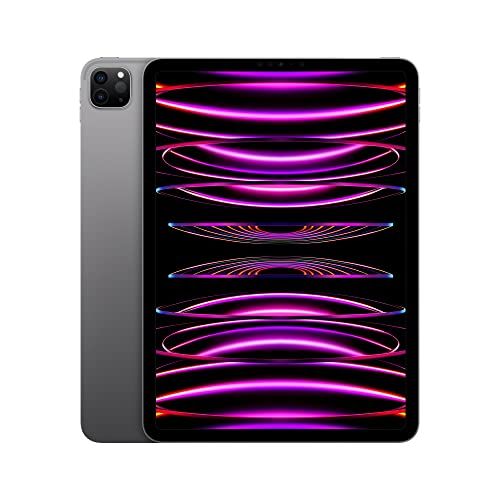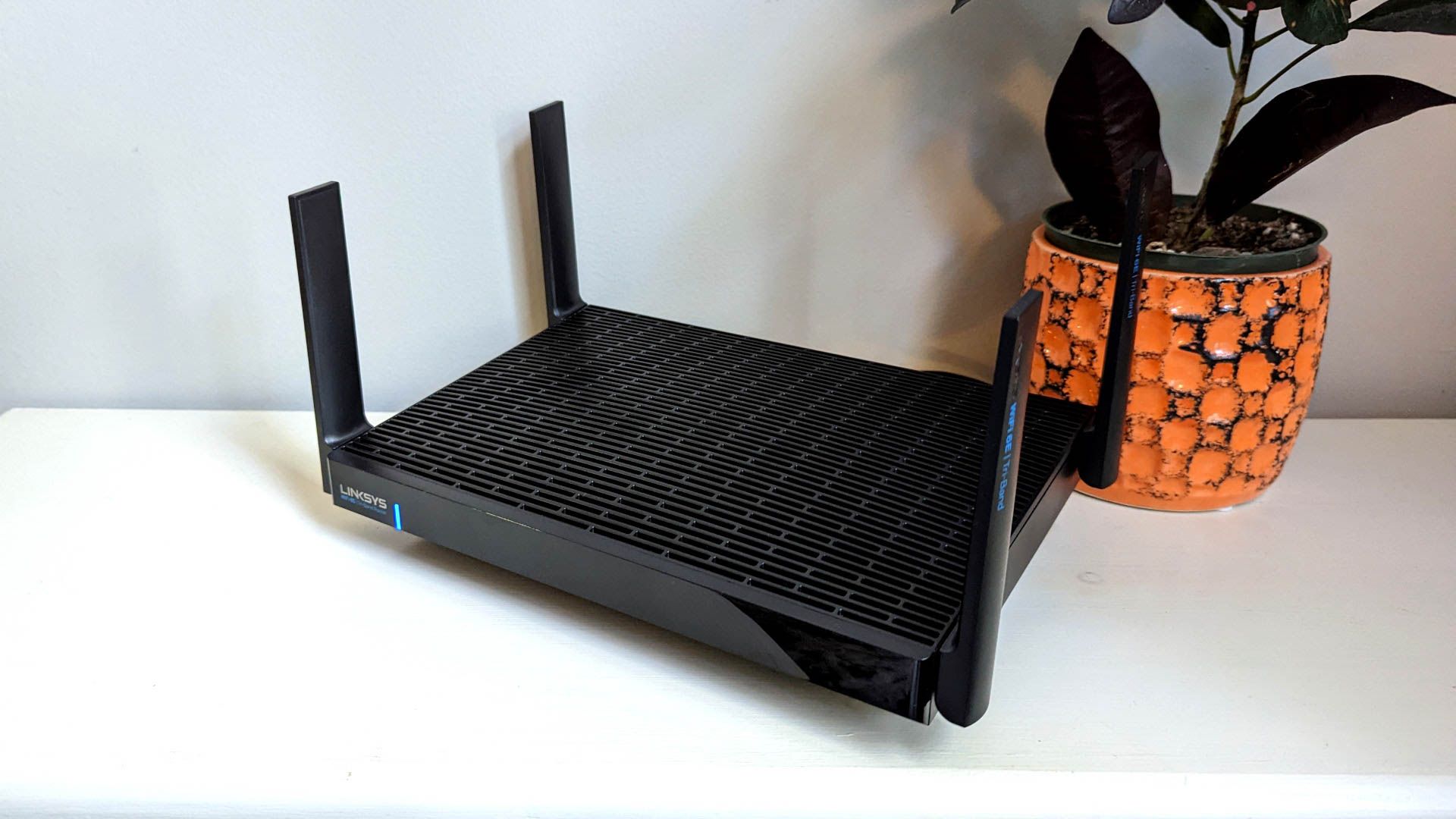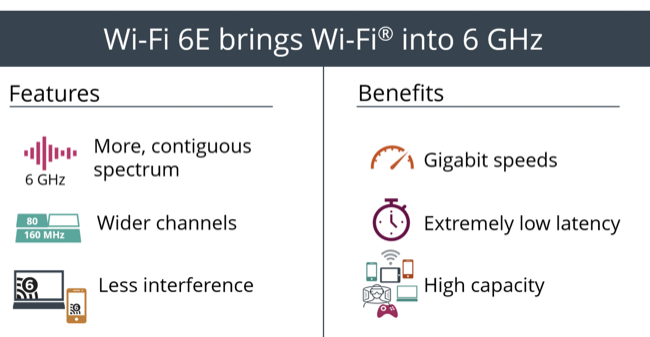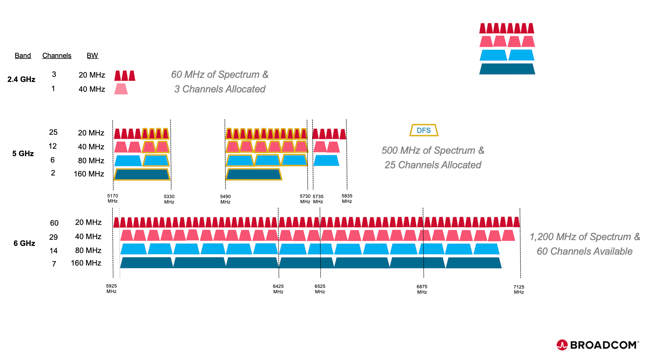Quick Links
Key Takeaways
Upgrading to Wi-Fi 6E without any devices that can take advantage of it may be a poor investment. However, getting your network ready for faster devices that are on the way is wise, and a Wi-Fi 6E router can reduce network congestion issues even if no connected devices support it.
Wi-Fi is an ever-evolving technology, so it's not unusual to see new products regularly hit the market with promises of faster speeds and more stable connections. One such technology you might have come across recently is Wi-Fi 6E. So what is it, and do you need it?
What Is Wi-Fi 6E?
Wi-Fi 6E is the evolution of the Wi-Fi 6 standard that was introduced in 2019. Wi-Fi 6 represented the first attempt to standardize wireless networking with a more palatable name (802.11ax doesn't have the same ring), a move that seems to have stuck and should help you better differentiate wireless standards going forwards.
Wi-Fi 6E uses a frequency of between 5.925 GHz to 7.125 GHz in the US (this may differ elsewhere due to the way radio frequencies are regulated). Early iterations of Wi-Fi were limited to the 2.4 GHz band, then dual-band routers added 5 GHz to the spectrum. Wi-Fi 6E finally expands this to the 6 GHz band.
The technology also increases the number of wide data channels that a router can create, with up to eight 160 MHz bands (one on the 5 GHz band, seven on the 6 GHz band) or 14 separate 80 MHz bands, making it ideal for devices that benefit from a high-bandwidth, low-latency connection.
Though the standard was officially adopted in 2020, many manufacturers only just started adding support for the standard to devices in 2022.
What Benefits Does Wi-Fi 6E Have?
Like the 5 GHz band before it, distance isn't a strong point when it comes to the 6 GHz band. Due to a reliance on the 6 GHz band, Wi-Fi 6E is more limited in terms of range than the technology that came before it. Many devices will only work on the 6 GHz band while in the same or an adjoining room, reverting to 5 GHz (or 2.4 GHz) when you venture out of range.
The real benefit of Wi-Fi 6E is in solving congestion. The technology reduces problems in crowded, high-density environments where there are a lot of competing networks. 6E benefits those who live in large apartment buildings or who work in large office buildings. The 6 GHz band has up to 1200 MHz of spectrum and 60 channels, compared with 500 MHz and 25 channels on the 5 GHz band.
There are also advantages in terms of speed and latency, with Wi-Fi 6E supporting a maximum theoretical speed of 9.6 Gbps. The Netgear RAXE300 router we reviewed in August 2022 promised a maximum throughput of 2.4 Gbps. We also reviewed the Linksys Hydra Pro 6E in October which claims a top speed of up to 4.8 Gbps on the 6 GHz band. (Of course, your actual speeds depend on several factors, including your home's construction and the speeds provided by your ISP.)
It's not just speed that's improved with Wi-Fi 6E, but latency too. Wi-Fi 6E chipsets are capable of less than 1 millisecond of latency, perfect for Wi-Fi calling, gaming over the wireless network (locally or online), and tethering devices like augmented reality (AR) or virtual reality (VR) headsets.
Like Wi-Fi 6 before it, 6E is capable of mesh networking. This allows you to overcome some of the limitations in terms of range by carefully positioning nodes around your house or office (though this could be an expensive endeavor).
Which Devices Support Wi-Fi 6E?
Like any new technology, it takes time for manufacturers to get on board. Adoption tends to lag by several years in terms of networking, but the upside is that devices that use the newest standards (like Wi-Fi 6E) retain compatibility with older standards. This allows you to invest in new gadgets with better capabilities without feeling obliged to upgrade your network equipment until the time is right.
Apple is one company that has dragged its heels in terms of adopting Wi-Fi 6E. Its latest flagship devices including the iPhone 14 (and 14 Pro), MacBook Pro (2021), and MacBook Air (2022) can only make use of Wi-Fi 6 networks. Only the 4th-generation 11-inch iPad Pro and sixth-gen 12.9-inch iPad Pro have Wi-Fi 6E support at this stage.

iPad Pro 11-inch (4th-generation, 2022)
With the same M2 chip that's in the latest MacBook Air, a 120 Hz Liquid Retina XDR display, and support for the second-gen Apple Pencil, the 4th-generation iPad Pro is one of the first Apple devices to support Wi-Fi 6E.
At the same time, neither the Sony PlayStation 5 nor the Xbox Series X (and Series S) support Wi-Fi 6E. The PS5 has support for Wi-Fi 6, while Microsoft's consoles are still limited to "Wi-Fi 5" (802.11ac).
So far, only a limited number of devices support the standard. This includes the Google Pixel 6 (plus Pixel 6 Pro and 6a) and its successor the Pixel 7, the Samsung Galaxy S22 Ultra or Plus (and last year's S21 Ultra), the ASUS ROG Phone 5 and ZenFone 8, and Xiaomi's Mi 11 (and Ultra).

Samsung Galaxy S22 Ultra
One of the best Android smartphones on the market, Samsung's flagship Galaxy S22 Ultra can shoot 8K video and up to 108 megapixel still photos, features a beautiful adaptive contrast screen, embedded S Pen stylus, and support for Wi-Fi 6E.
Laptops with Wi-Fi 6E are mostly limited to high-end and gaming-focused machines like the Acer Predator Triton 500 SE (and Helios 300), HP Spectre x360, and Lenovo's ThinkPad X1 Extreme. If you have a desktop PC you can invest in something like the GIGABYTE GC-WBAX210 to add Wi-Fi 6E capability using a free PCIe slot.

Acer Predator Triton 500 SE
A high-end gamer and creator-focused machine with a 12th-gen Core i9 Intel CPU, mobile GeForce RTX 3080 Ti, and 32GB of LPDDR5 RAM, plus support for the latest Wi-Fi 6E standard.
The takeaway is that many of the latest devices are still limited to Wi-Fi 6, with only a handful currently supporting the latest standard. To find out if your current device is capable, take a look at the manufacturer's spec sheet. If you see 802.11ax listed alongside support for the 6 GHz band (not just 2.4 GHz and 5 GHz), you can take advantage of Wi-Fi 6E.
Is It Worth Upgrading to Wi-Fi 6E?
Wi-Fi 6E has had a slow start, and, at the time of writing, there's a high chance that you don't own any devices that are compatible with the standard. That doesn't necessarily mean you won't get any benefit from it, though (remember that Wi-Fi 6E routers are backward-compatible with older devices). Investing now means you'll get the benefit of faster speeds and lower latency as you invest in more compatible devices over time.
But investing in Wi-Fi 6E is still an expensive endeavor. As more products come to market it will be cheaper to invest, just as Wi-Fi 6 is cheaper than it was when the first products launched in 2019. You may want to wait until this happens before jumping in. A standard Wi-Fi 6 mesh router system may be a better use of funds until prices begin to fall.
Still, depending on your situation you may see a benefit right now. If you're struggling with network congestion in a dense urban environment, a Wi-Fi 6E router could be a good investment. If you're able to add Wi-Fi 6E to your desktop with a relatively inexpensive network card, the upgrade could be worth it. If you're an early adopter and have a few devices that already support the standard, a router upgrade may make sense to you.
Wi-Fi 6E Routers Are Available Now
One argument for investing in a Wi-Fi 6E router right now is that you're overdue for a router upgrade. Perhaps your old router isn't working like it used to and you're seeing frequent crashes, or you're tired of slow speeds and an unstable connection. You could jump ahead of the Wi-Fi 6 standard and invest in the 6E future right now.
Check out our best Wi-Fi 6E routers roundup to see our top recommendations. A mesh router system will provide the best coverage, but you'll need to invest well over $1000 (at the time of writing) if you want both speed and complete coverage. Alternatively, consider if your money would be better spent investing in a wired Ethernet setup.
What About Wi-Fi 7?
Wi-Fi 6E is barely out of the gate but Wi-Fi 7 is clawing at the door. The future of wireless networking promises speeds up to three times faster than Wi-Fi 6E (just short of 30 Gbps). Routers aren't due until mid-2023 at the earliest, with connecting devices likely to lag a few years after that.



